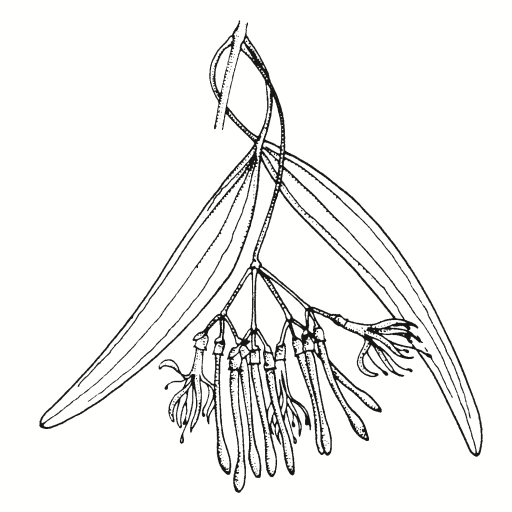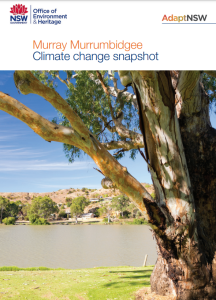Deeper Read – Climate-ready Revegetation
Changing climate conditions will have an effect on our local ecosystems, including our native flora and fauna. Given the revegetation and restoration we do now will be living through that change in climate, trying to understand what it may look like and adapting our practice is imperative for long term success. Our natural environment has resilience to the natural cycles of warming and cooling, of wet and dry that are part of changes in geological time. Dominant species and communities do change over that scale of time, and we see relicts of that even today. The presence of Callitris sp (White Cypress Pine) in the Kosciuszko National Park is a great example – plants hanging on in an area despite long term climate change meaning it isn’t their preferred habitat anymore.
Human-induced climate change is happening a lot faster than previous transitions due to the effect of greenhouse gas emissions. Scientists predict that until 2030, natural variability is projected to predominate over trends, but the revegetation that goes in the ground today will likely be maturing into different climatic conditions.
In the Murray Darling Basin overall it is predicted that by 2090:
- Average temperatures will increase in all seasons, and there will be more hot days and warm spells projected with fewer frosts.
- There will be less rainfall during the cool season, but similar rainfall in the warmer season.
- There will be harsher fire-weather.
- mean annual rainfall is projected to decline, heavy rainfall intensity is projected to increase.
Climate change could have a direct influence on all parts of the plant life cycle, as well as the biodiversity that is integral to many of these processes. Loss of diversity – species, genetic and ecosystem diversity has cascade effects and may be unpredictable. For plant we know to expect changes to:
- Flowering time, pollination and therefore seed production and viability,
- Germination and recruitment.
- Seed Dispersal.
- Plant survival to maturity.
Steps for Designing Climate-ready Plantings
- Identify Your Climate Analogue – find the region your area will resemble climatically in the future (e.g., 2030, 2050, etc.),
- Use the revegetation guide to choose 5 to 10 species that occur in both areas, and
- Get 30% of your plants and seeds from that analogue area.
In general, seed or plant stock in a planting should be 70% local and 30% from climate analogue areas.
The science does NOT advocating planting of different plant communities from the remnant vegetation in any given area.
Plant community level shifts can occur quickly in response to fire or drought when they are already under stress. This occurs now and is more a response to weather than climate change directly.
Plant community changes due to climate changes (eg. desert to rainforest) generally occur over really big timeframes (tens of thousands of years) even under an accelerated climate change scenario. As time goes on we may observe that the individual species ranges are changing and it may be that we do change the species mix too.
How to Identify your Climate Analogue
There are online tools and information being developed all the time. The key resources to look at are:
AdaptNSW
[The AdaptNSW website can be found at https://www.climatechange.environment.nsw.gov.au]
The interactive climate projections map displays projected changes to climate variables across NSW regions for the near and far future in both a regional and grid view. https://www.climatechange.environment.nsw.gov.au/projections-map
Click the image below (or follow this link) to view or download projection maps for the region – Murray Murrumbidgee

Climate Change Australia
Steps for creating climate ready revegetation sites
The figure below lays out the steps in creating climate adapted revegetation:

(Jellinek, S., Bailey, T.G. 2020. Establishing Victoria’s Ecological Infrastructure: A Guide to Creating Climate Future Plots. Greening Australia and the Victorian Department of Environment, Land, Water and Planning. Melbourne, Victoria. Version 2.1)
https://www.climatechange.environment.nsw.gov.au/impacts-climate-change/natural-environment/biodiversity
References
Linda M. Broadhurst, Thom(Jellinek, S., Bailey, T.G. 2020. Establishing Victoria’s Ecological Infrastructure: A Guide to Creating Climate Future Plots. Greening Australia and the Victorian Department of Environment, Land, Water and Planning. Melbourne, Victoria. Version 2.1as
- Jones, Forrest S. Smith, Tom North, Lydia Guja, Maximizing Seed Resources for Restoration in an Uncertain Future, BioScience, Volume 66, Issue 1, 01 January 2016, Pages 73–79, https://doi.org/10.1093/biosci/biv155



